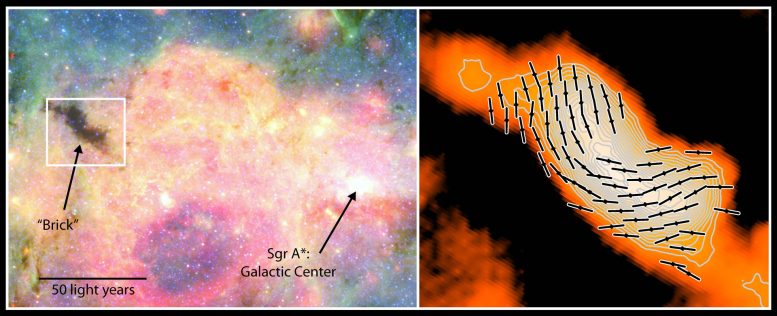
(Click for full image) Dark brick: the left panel shows the “Brick” as a shadow against the mid–infrared emission from warm gas and dust in the vicinity of the Galactic Center. The background false–color image and white contours in the right panel give the emission of cold dust in the Brick itself. Markers indicate the orientation of the magnetic field deduced from polarization observations. The area shown on the right is indicated by a white box in the left–hand panel. Credit: T. Pillai & J. Kauffmann, based on Spitzer GLIMPSE & MIPSGAL images (NASA / JPL–Caltech / Univ. of Wisconsin) and Hertz data from the CSO (J. Dotson)
A new study shows for the first time that high magnetization sets the stage for the formation of massive stars with 8 solar masses or more.
Magnetic fields in massive dark clouds are strong enough to support the regions against collapse due to their own gravity. A study led by researchers at the Max Planck Institute for Radio Astronomy in Bonn has now shown for the first time that high magnetization sets the stage for the formation of stars much more massive than the sun. This was demonstrated in observations of polarized dust emission from two of the most massive clouds in our Milky Way, the “Brick” and “Snake”.
Stars much more massive than the Sun (with 8 solar masses or more) live wild and die young. They spew out powerful stellar winds and sometimes explode violently to end up as supernovae. Even their birth is spectacular: massive stars form out of very dense and massive gaseous cores that are deeply embedded within dark clouds of gas and dust. In fact, the high mass of these cores has puzzled researchers for many years: the cores should quickly collapse due to their own gravity and destroy themselves before telescopes on Earth can detect them.
“For the first time we witness how magnetic fields thread a massive cloud and help stabilize the region while it gets ready to form high–mass stars,” says Thushara Pillai from the Max–Planck–Institut für Radioastronomie (MPIfR) in Bonn (Germany), the lead author of the study. “The cloud would already be collapsing if there were no magnetic support”, she adds. “In that case the young forming cores would never become massive enough to form stars much larger than the Sun.”
It has long been suspected that magnetic fields help to support clouds against collapse. But magnetic fields are elusive: it is difficult to tease the weak signal from magnetic fields from the noise. Every region has to be observed over several nights to finally achieve a significant detection. The current study therefore only targets two regions. The “Brick” is an unusually dense cloud that is as opaque as its namesake. It resides just a few dozen light-years away from the Galactic Center Black Hole at a distance of about 26,000 light-years. The nickname of the “Snake” is inspired by its serpent–like shape. This cloud is about 12,000 light-years away from Earth. The team used archival data from two telescopes on top of Mauna Kea (Hawaii, USA) to conduct this research, the James Clerk Maxwell Telescope and the Caltech Submillimeter Observatory.

(Click for full image) Cosmic snake: In the left panel the “Snake” is seen as a dark silhouette against the diffuse mid–infrared glow of the Milky Way. The right panel zooms in on a dense section of the cloud that is outlined by a box in the overview panel. The background false–color image and contours indicate emission from cold dust. Markers give the magnetic field orientation derived from polarization observations. Credit: T. Pillai & J. Kauffmann, based on Spitzer GLIMPSE & MIPSGAL images (NASA / JPL-Caltech / S. Carey [SSC/Caltech]) and SCUPOL data from the JCMT (P. Redman / B. Matthews)
This study opens a new chapter in research that started in the early 1980s at the Effelsberg 100m–telescope of the MPIfR. First surveys of dense gas near the center of the Milky Way revealed unusually massive clouds, including the “Brick”. This discovery inspired several follow–up studies, as co–author Jens Kauffmann from the MPIfR explains. “Two years ago we successfully revealed for the first time the internal structure of the Brick. We were surprised to find very little substructure in this cloud: something seemed to stop the gas from clumping up. Now we know that the strong magnetic field might do this.”
The team has now started a project that will observe many more such clouds. This time the researchers will use MPIfR’s APEX telescope. “APEX is currently the only telescope worldwide that is equipped to make these observations”, concludes Thushara Pillai. “It is an exciting possibility to use this observatory to explore more of our Galactic backyard”.
Reference: “Magnetic Fields in High-mass Infrared Dark Clouds” by Thushara Pillai, Jens Kauffmann, Jonathan C. Tan, Paul F. Goldsmith, Sean J. Carey and Karl M. Menten, 16 January 2015, The Astrophysical Journal.
DOI: 10.1088/0004-637X/799/1/74
arXiv: 1410.7390v2
PDF Copy of the Study: Magnetic Fields in High-Mass Infrared Dark Clouds

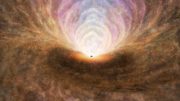
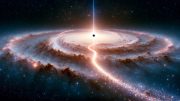
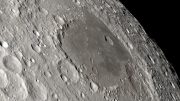


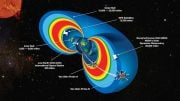
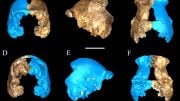

Be the first to comment on "Magnetic Fields in Dark Clouds Help Form Massive Stars"